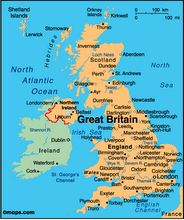The Royal Botanic Gardens at Kew, as they are formally known, are a World Heritage site and the most complete public gardens in the world. Kew Gardens house the world's largest collection of living plants, with more than 30,000 different types of plants, as well as over 7 million preserved plant specimens in the herbarium. The organisation employs more than 650 scientists and other staff.
Kew Gardens originated in the exotic garden at Kew Park formed by Lord Capel of Tewkesbury. It was enlarged and extended by Augusta Dowager, Princess of Wales, the widow of Frederick, Prince of Wales, for whom Sir William Chambers built several garden structures, including a huge Chinese pagoda (built in 1761), which still stands today. George III enriched the gardens, aided by William Aiton and Sir Joseph Banks (who should be familiar to Kiwis, as one of Captain Cook's crew members, who Banks Peninsula was named after).
The collections grew rather haphazardly until the appointment of the first collector, Francis Masson, in 1771. In 1840 the gardens were adopted as a national botanical garden. The garden's present size is 120 hectares (300 acres)!
It was a lovely day to wander the gardens on Sunday - a little grey at first, but sunny and quite hot later in the afternoon. We started our visit by heading to the Princess of Wales Conservatory, which houses 10 climate zones. We saw a section on carnivorous plants as well as an extensive collection of cacti, ferns and orchids, which were all very interesting.
Next to the Princess of Wales Conservatory, there is a large outdoor rock garden, separated into areas for each of the different continents - there were even a few plants from little old New Zealand in the rock garden. We sat on the grass in front of the rose garden and ate our lunch before visiting the Waterlilly House and the enormous Palm House. Palm House houses tropical rain forests. It was very hot inside this huge glasshouse, particularly when we walked upstairs to the top level. Some of the plants in there were absolutely massive - one had leaves that must have been about 4-5 metres long!
After escaping outside for some cooler air, we walked across to the Xstrata Treetop Walkway, an 18 metre high circular walkway connecting several big trees. There are great views of Kew Gardens from up on the walkway, as well as views of London - you can even see the Wembley arch! Back on the ground, we walked back across the gardens through the Azalea Garden and the Magnolias towards Kew Palace.
Kew Palace is the smallest of the British royal palaces. It was built by Samuel Fortrey, a Dutch merchant in around 1631. It was later purchased by George III. To the rear of the building is the "Queen's Garden" which includes a collection of plants believed to have medicinal qualities. We enjoyed wandering through the Queen's Garden, admiring the fountains and sculptures - a nice way to round off our visit to Kew Gardens.

Megs in the
Princess of
Wales Con-
servatory

Tim and
Palm
House


Megs in
the Rock
Garden

Waterlilly
House

Palm
House

Inside
Palm
House

View from
Treetop
Walkway

And
again

Kew
Palace




No comments:
Post a Comment